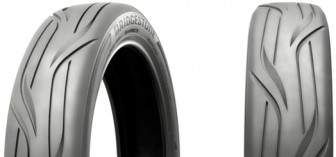
Bridgestone rolled out a new concept tire made of 100% sustainable materials at the 2012 Paris Motor Show this month. The company is hoping to boost its environmental bona fides by expanding the sources of its rubber supply and introducing new materials into its tires to reduce the estimated seven to 10 gallons of oil it takes to manufacturer a single tire.
To get there, the company says it is diversifying the regions where it produces natural rubber and expanding the range of reinforced plant fibers in the tires. In addition, fossil resource-based components in the tire were synthesized from biomass.
Among the materials in the tire: rayon and new cellulosic fiber, synthetic rubber from biomass, rubber materials (curing agents and anti-aging chemicals) from biomass, and reinforcing carbon black from vegetable fats and oils (used as filler).
Next up: Bridgestone will invest in R&D and develop core technologies for mass production of the tires. It will be awhile before anyone can mount one of the new tires on their car. The company has set a target date of 2050 for commercially viable, sustainable tires, although the company says that it is targeting 2020 for “commercial sales of certain sustainable materials used in the manufacturing process.”
Other companies are also working on better tire manufacturing processes and materials. Last year, Dow and Lehigh Technologies announced a partnership to use Lehigh’s recycled rubber powders in existing products. Another biomass-based advancement was unveiled at the National Meeting of the American Chemical Society in 20120.
Source: Bridgestone

























